Your cart is currently empty!
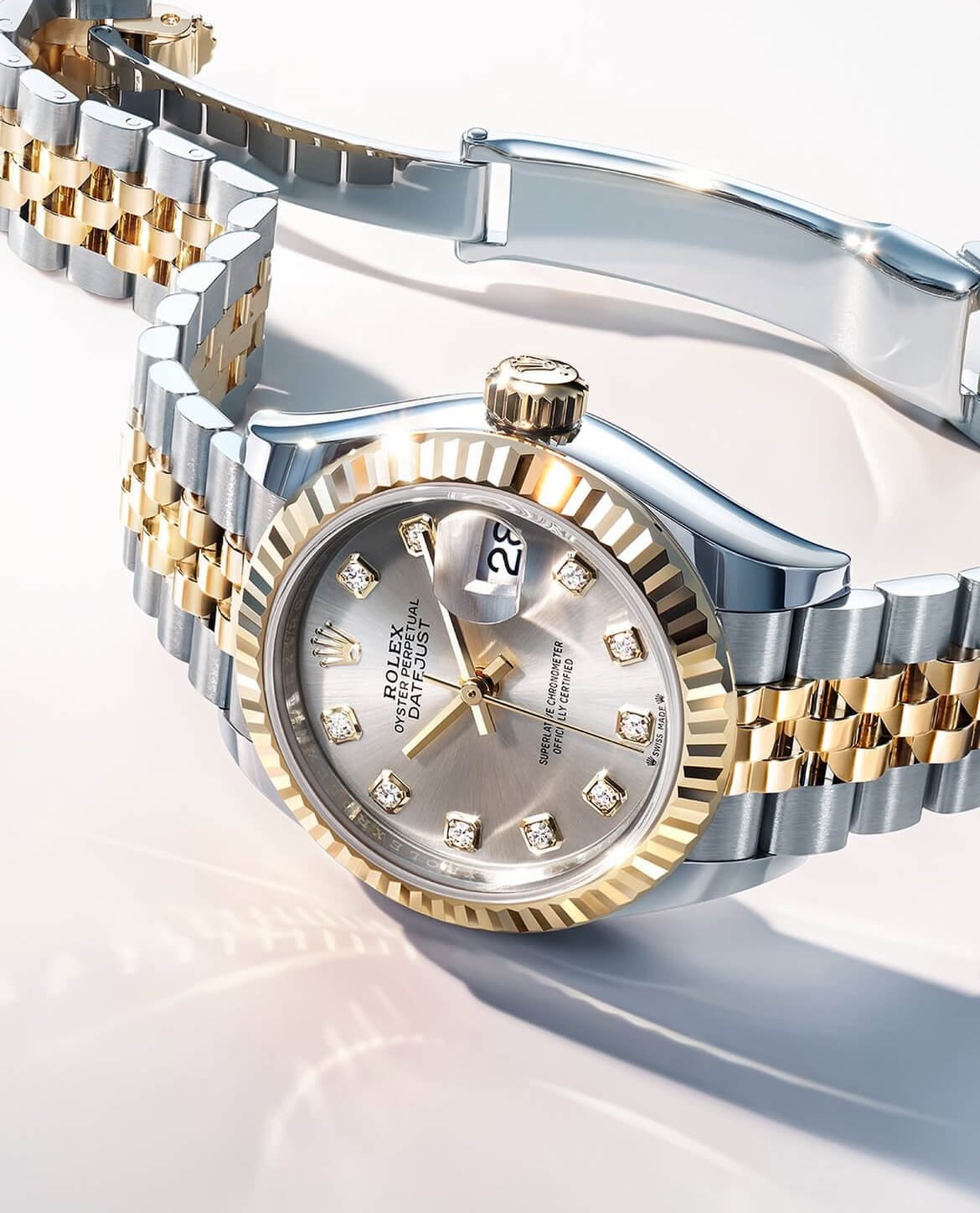
Rolex watches are among the most coveted timepieces in the world, symbolizing luxury, precision, and timeless elegance. However, with their popularity comes a rise in counterfeit watches. Fake Rolexes can be tricky to spot, but there are several key features that can help you differentiate a genuine Rolex from a replica. In this guide, we’ll walk you through the most important factors to check when determining the authenticity of a Rolex watch.
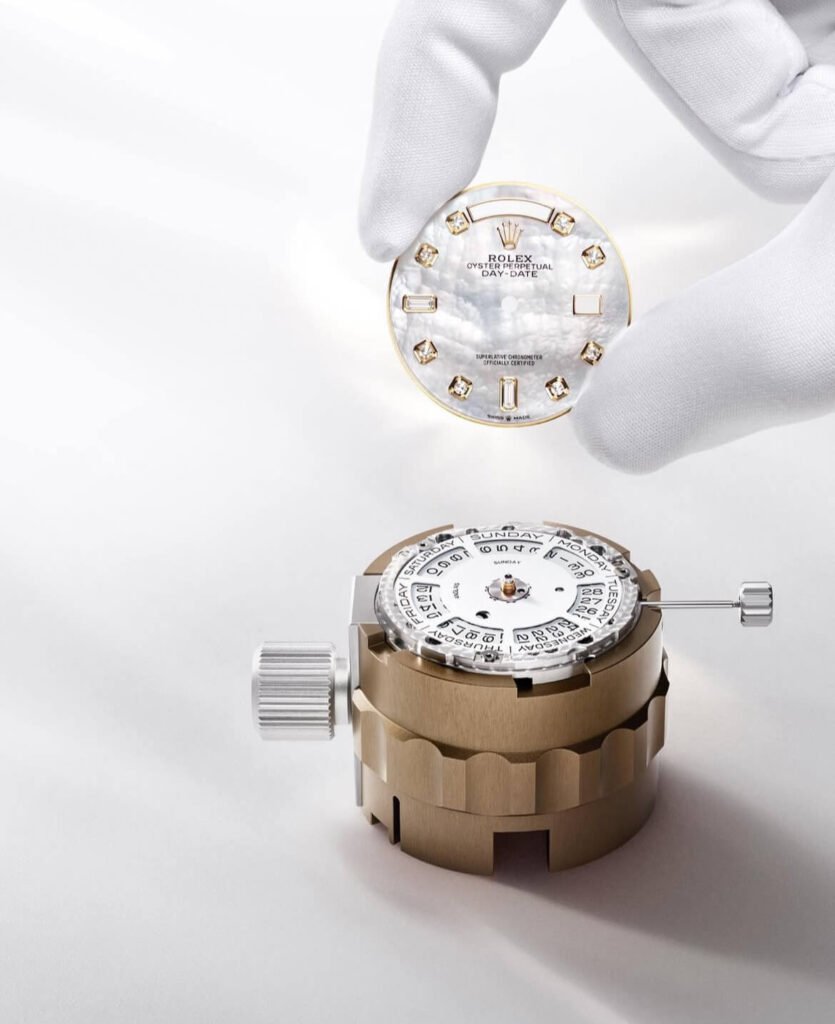
1. Weight of the Watch
One of the most immediate ways to tell if a Rolex is real is by its weight. Rolex watches are crafted from high-quality materials such as 18k gold, stainless steel, and platinum. This gives them a substantial feel on the wrist. A fake Rolex, made with lighter and cheaper materials, will feel surprisingly light.
Why this matters: Genuine Rolex watches are made with heavy-duty metals designed to last. If a Rolex feels light or flimsy in your hand, it’s a red flag.
2. Smooth Movement of the Seconds Hand
A genuine Rolex has a signature smooth, sweeping seconds hand. Unlike quartz watches, which “tick” once every second, Rolex watches feature a mechanical or automatic movement that creates a continuous motion of the second hand. This gives the illusion of a sweeping movement, rather than the usual jerky ticking motion found in fake watches.
What to look for: If you observe the second hand ticking in small steps, especially if it’s too fast or jerky, it’s a clear sign of a counterfeit Rolex.
3. Examine the Engravings and Markings
Rolex takes great care in ensuring that all engravings on their watches are flawless. Check the markings on the dial, case, and back for precision and clarity. Rolex engravings should be sharp, crisp, and well-placed. Fake Rolexes may have poorly done engravings, or they may be misspelled or uneven.
- Rolex Logo: The iconic crown logo should be finely etched into the watch, without any smudging or roughness.
- Dial Markings: The text should be clear, sharp, and placed exactly. Fakes often have blurry or uneven text.
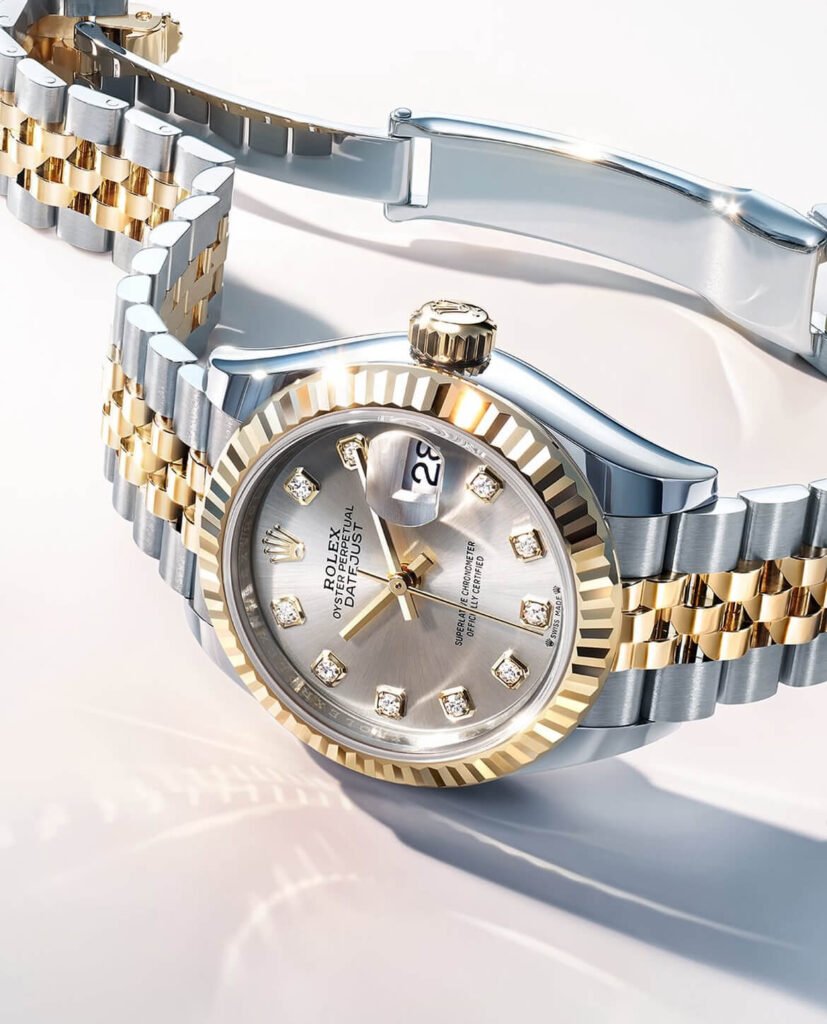
4. Serial and Model Numbers
Every genuine Rolex has unique serial and model numbers engraved between the lugs (the area where the bracelet meets the watch case). These numbers should be easy to read and etched deeply into the metal. On some older models, you may find these numbers near the 6 o’clock position.
Check the numbers: The serial number is critical for confirming the authenticity of the watch. Rolex maintains a detailed registry of these numbers, which can be cross-referenced to identify when and where the watch was produced. If the numbers are poorly etched or missing, it’s a strong indication that the watch is a fake.
5. The Cyclops Lens and Date Magnification
Rolex watches often come with a Cyclops lens, a small magnifying lens located above the date window, which magnifies the date by 2.5x. This feature is unique to Expensive Rolex and is one of the easiest ways to spot a counterfeit.
What to look for: A genuine Rolex will have a perfectly aligned Cyclops lens and provide clear magnification. If the date is hard to read, or if the lens is off-center or poorly aligned, it’s likely a replica.
6. Check the Case Back
Rolex watches are known for their smooth, simple case backs. Most Rolexes don’t feature engravings on the back, and any engraving beyond the model and serial number is a clear sign of a fake. While certain limited-edition models may have some engravings, they are rare.
Why this is important: Many counterfeit Rolexes will try to imitate the classic, clean look of the Rolex case back, but their engravings tend to be poorly done. Rolex never uses engraving like “Water-Resistant” or “Stainless Steel” on the back of the watch. If you see these markings, it’s almost certainly a fake.
7. Rolex’s Crown Logo
The crown logo on a genuine Rolex is always crisp, precise, and carefully designed. Whether it’s on the dial, winding crown, or clasp, the logo should have fine details, such as a well-defined finish and sharp edges.
How to check: Inspect the crown logo closely. If it looks blurry, uneven, or poorly etched, it’s likely a counterfeit.
8. Bracelet and Clasp Quality
Rolex is renowned for its attention to detail, and this extends to the bracelet and clasp of the watch. The bracelet should feel solid, with smooth links and an overall sturdy construction. Genuine Rolex bracelets often feature intricate details such as the “Rolex” engraving on the clasp and micro-adjustment mechanisms for size.
What to notice:
- Clasp sound: When you close the clasp, listen carefully. A genuine Rolex clasp makes a clean, precise snap, while a fake may sound hollow or cheap.
- Link quality: Rolex links are typically solid and robust. A fake Rolex might have hollow links or a cheap feel.

9. Price of the Watch
Rolex is an investment, and they don’t come cheap. If you find a brand-new Rolex being sold at an unusually low price, it’s highly likely that it’s a fake. Be wary of deals that seem too good to be true.
Why this matters: The price of a Rolex is a reflection of the materials, craftsmanship, and heritage. If someone is offering you a Rolex for a fraction of the price, it’s probably a counterfeit.
10. Professional Verification
If you’re still unsure about the authenticity of your Rolex, it’s always a good idea to have it professionally verified. A Rolex-authorized dealer or an experienced watchmaker will be able to examine the movement and other components to ensure that the watch is real.
Professional check: Experts can open the case back, inspect the movement, and check the serial and model numbers against Rolex’s database to confirm the watch’s authenticity.

Final Thoughts
Owning a Rolex is a sign of success and sophistication, and no one wants to be duped into purchasing a counterfeit. By paying close attention to the weight, movement, engravings, date magnification, and other details, you can ensure that you’re buying a genuine Rolex that will last a lifetime.
If you’re buying a second-hand Rolex or an older model, always consider having it authenticated by a professional to avoid costly mistakes. After all, a Rolex isn’t just a watch; it’s an heirloom in the making.
How to Tell if a Rolex Watch is Real
- Weight: Genuine Rolex watches are heavy due to high-quality materials. A fake Rolex winder will feel lighter.
- Smooth Movement: The seconds hand of a real Rolex moves smoothly, without a ticking motion. Fake ones usually tick in steps.
- Engravings: Rolex engravings are sharp and precise. Check the logo, dial text, and case for clear markings.
- Serial and Model Numbers: Authentic Rolexes have unique serial and model numbers between the lugs, etched deeply into the metal.
- Cyclops Lens: The date magnification through the Cyclops lens should be clear and 2.5x. If it’s weak or misaligned, it’s a fake.
- Case Back: Most Rolex watches have a plain, smooth case back with minimal engraving. Counterfeits often feature extra markings.
- Clasp and Bracelet: The bracelet should feel solid, and the clasp should make a clean snap when closed. Fake ones may feel cheap.
- Price: A Rolex at a suspiciously low price is likely a fake. Authentic Rolex watches are premium-priced.
- Professional Verification: If in doubt, take the watch to a Rolex-authorized dealer or expert for authentication.
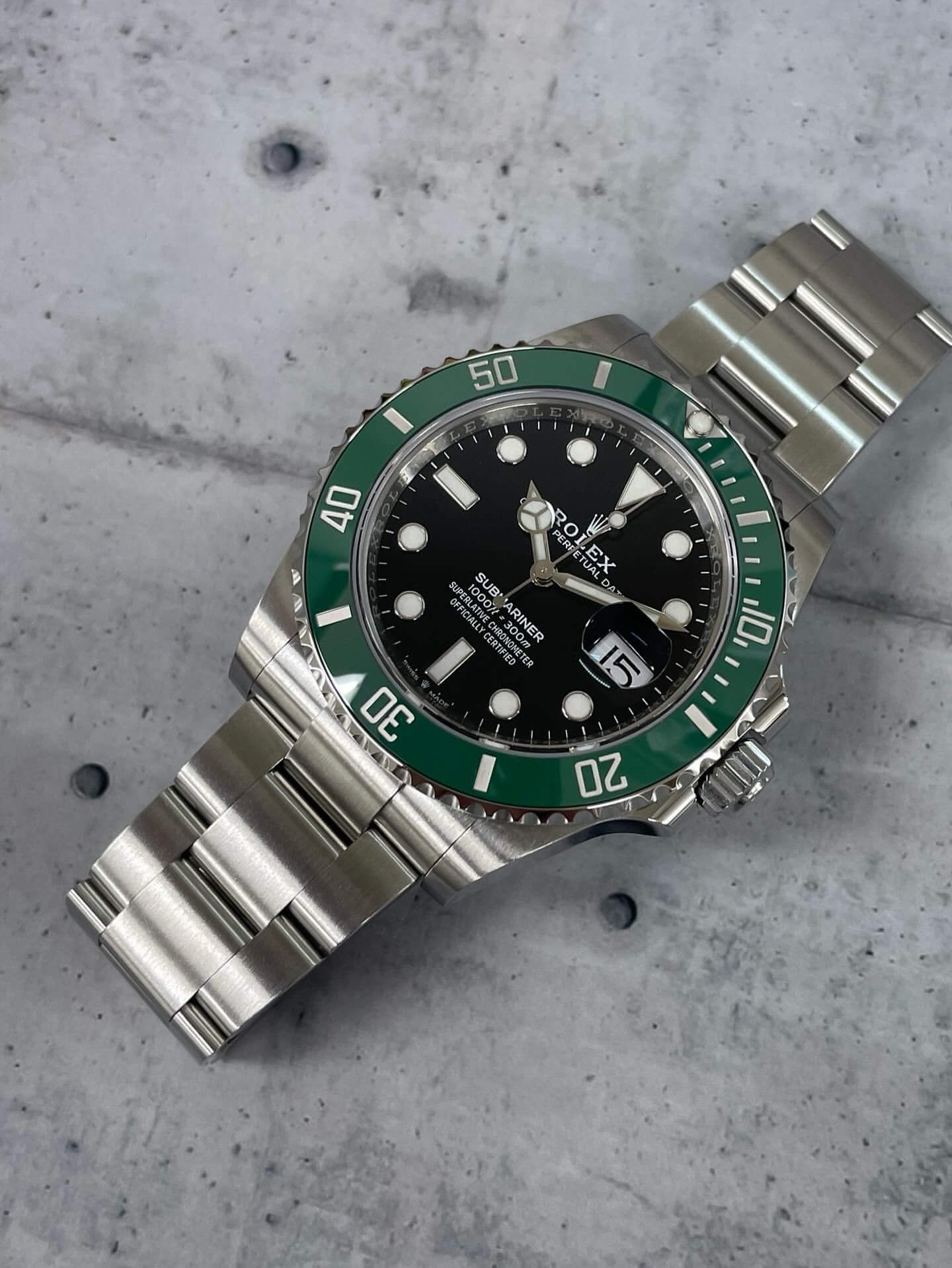
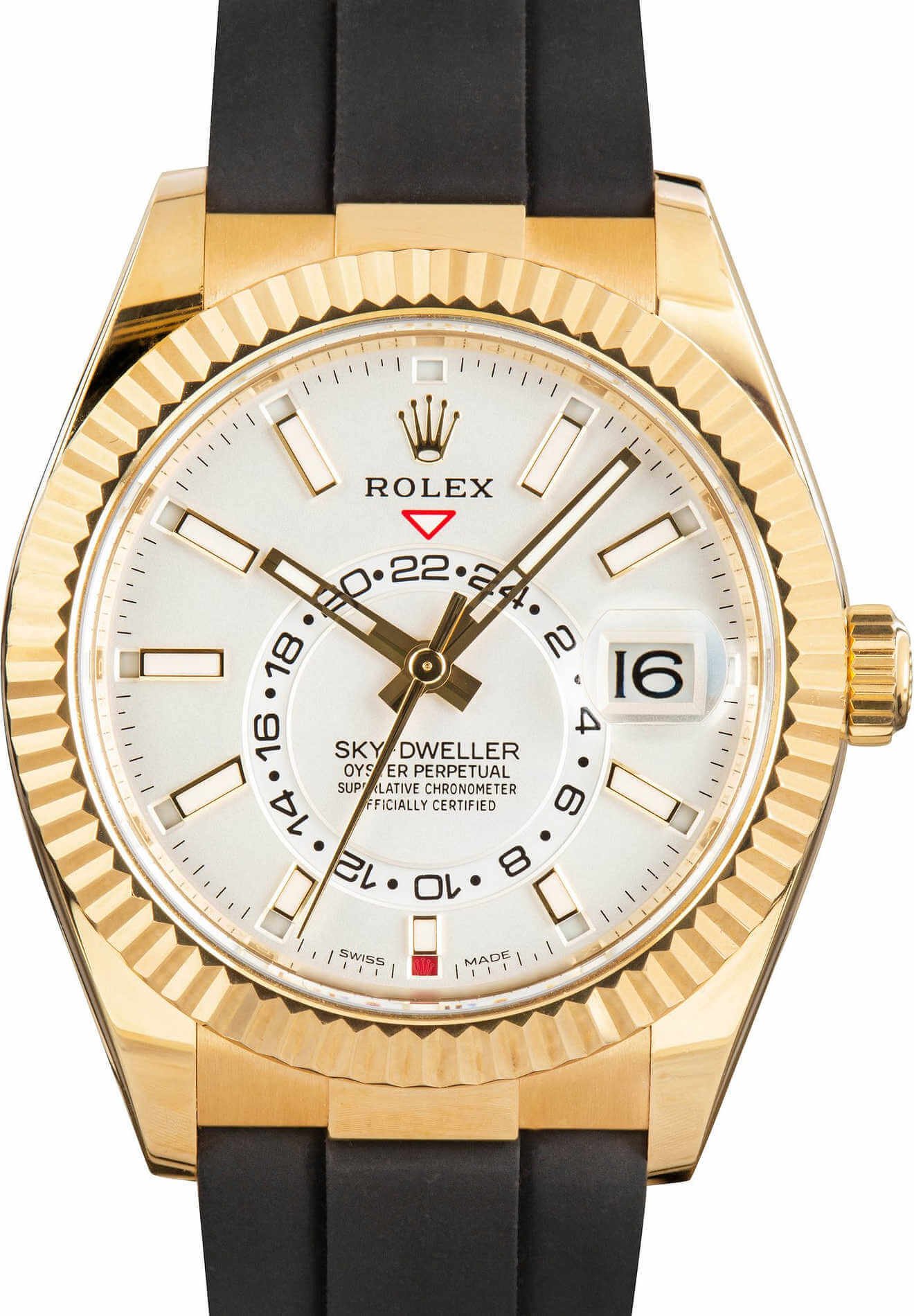
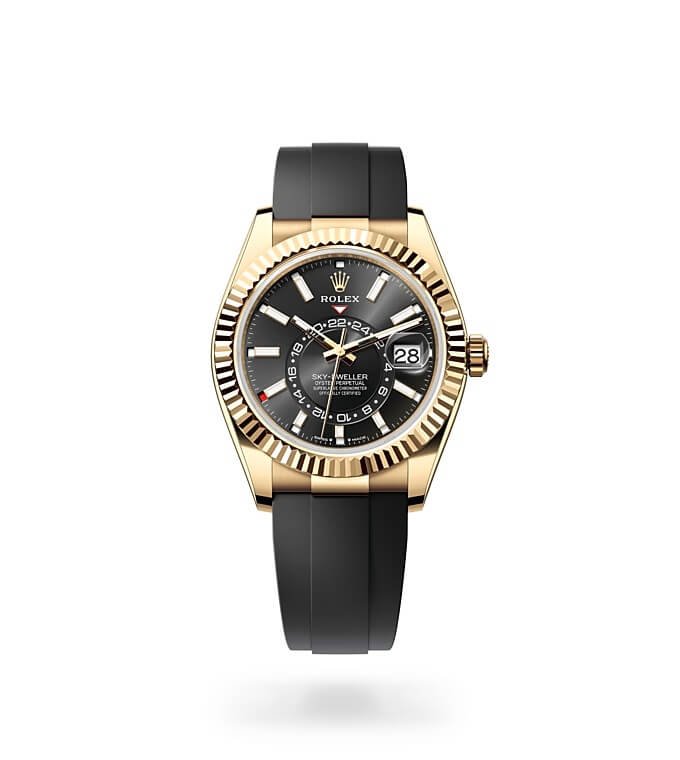
2 responses to “How to Tell if a Rolex Watch is Real: A Complete Guide”
[…] contribute to the high cost, there’s much more to it. Let’s dive into the factors that make real Rolex watches so […]
[…] into the winding process, it’s important to understand the type of movement inside your Rolex. Real Rolex watches are powered by automatic movements, meaning they wind themselves as long as they’re being worn. […]